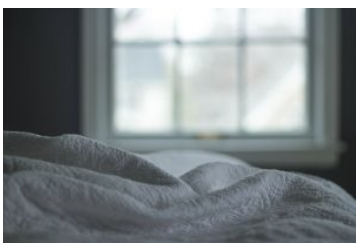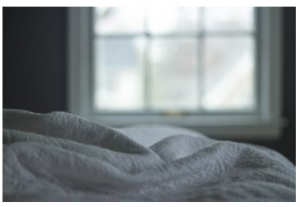
We fall asleep on buses, tubes, on the couch, in the office. However, for others, it is an evasive mistress. Insomnia will make us feel terrible. It may cause us more suspectable to becoming sick and putting on weight. A lack of sleep may also make us feel as though we are heading from our minds. The more it goes on, the greater at odds with the daylight world we believe.
 And, according to a new research, insomnia may actually be the reason some folks develop mental health problems in the first place. Research concludes that a lack of sleep can lead to thoughts related to depression and anxiety – stuck in loops of negative thinking. And the more insomnia continues, the worse our psychological conditions become, particularly if there are preexisting ailments.
And, according to a new research, insomnia may actually be the reason some folks develop mental health problems in the first place. Research concludes that a lack of sleep can lead to thoughts related to depression and anxiety – stuck in loops of negative thinking. And the more insomnia continues, the worse our psychological conditions become, particularly if there are preexisting ailments.
For 50 of the 61 years, Brett Lockwood has kept odd hours. He rarely waits until 3:00am and the smallest human noise can shock him fully awake. When Mr Lockwood and his partner Jennifer started planning house extensions in their California-style bungalow in Brunswick, Melbourne, it was the moment he had been waiting for. Part of it was always his desire to have, for the first time in my life, a room which was reliably silent. The key word for him, he said, is dependable. Mr Lockwood’s special needs are borne from injury.
Back in 1965, when he was 10 years old, he had been raped on the way home from college by a stranger. His sleeping problems began soon after. He is thereafter afraid to go to sleep since he cannot monitor his surroundings, and that would return to the sexual assault. He said that he can imagine this resonate with several other individuals too.
In contrast to his demand for quiet, Jennifer wanted these residential interior designs to be for a social hub, where her family of 14 could sit down comfortably for Christmas. Serving the competing demands for this space was among the best challenges interior designers and architect Anthony Clarke had confronted. They are two completely different customers, basically, so they wanted to make sure it did not read as two distinct ideas … that it read as one job inside and outside. The end result – the Garden Pavilion – is extraordinary in both its simplicity and its effectiveness.
The Garden Pavilion is aptly named. On the outside a lengthy pair of curved windows and folding doors arch to the rear garden, finishing at a sharp corner of glass. At that stage, the windows are enclosed with hinged four-metre-high dividers of western red cedar which were charred black with a blowtorch.
When closed, these imposing blackened panels seal Mr Lockwood’s bedroom against external light, and noise. Mr Clarke explained that Brett comes out when he awakens and he undoes the tarp straps and the carabiner hooks, opens up the huge panels and then gets link to the backyard. She says that the lovely thing about the charred wood is that it leaves a mark, so the ritual suggests two unique conditions: from awake to sleep or sleep to awake. As the architect speaks, he illustrates how the heavy shutters open and close. From the time he’s finished, his hands and face are streaked with black.
In the garden, you enter a large living room with a fresh kitchen at one end, And Mr Lockwood’s bedroom in the other. Within the house design, the ceilings change in height from the kitchen to dining into a dining room. Uncharred western red cedar lines the skylight due to its ability to absorb sound. Despite a polished concrete floor, lots of windows and an exposed concrete brick wall, when folks speak there’s no echo. The living room is an acoustically dead area.
The area is warm in winter and cool in summer. It is large enough to accommodate a contemporary restaurant, but with none of the exhausting sound reflections that plague modern dining. Mr Lockwood said that Jennifer can be right down one end of the space and talk quite softly, and I’ll hear what she says.
So how could Mr Lockwood’s adjoining bedroom potentially be silent when buddies and family come for a drink or a meal? This is where the Garden Pavilion’s smart design and its interior style and house design comes in. The bedroom is small, high-ceilinged, without parallel walls. On one corner will be the double-glazed windows, enclosed with the charred shutters. Another window appears down the side fence.
It has been a little over a year since extrovert Jennifer and introvert Brett Moved to the extension. It’s the spaces that they need, but enables them to be with each other at a moment’s notice. But breaking a 50-year routine of wakefulness from childhood injtraumaury will take some time, Mr Lockwood said. He sleeps a lot more now. It has changed his life, in his words … and the one word to describe it is confidence. It is something he says he has never had before.
For Mr Clarke, this profound collaboration turned friendship has broken new ground for the architectural business where he works. He is now working on creating better living spaces with second storey extension designs for people dealing with pneumonia and dementia. Now they are talking to psychologists, anthropologists, ethnographers … all these people we will need to speak to, to offer a far better physical outcome.
